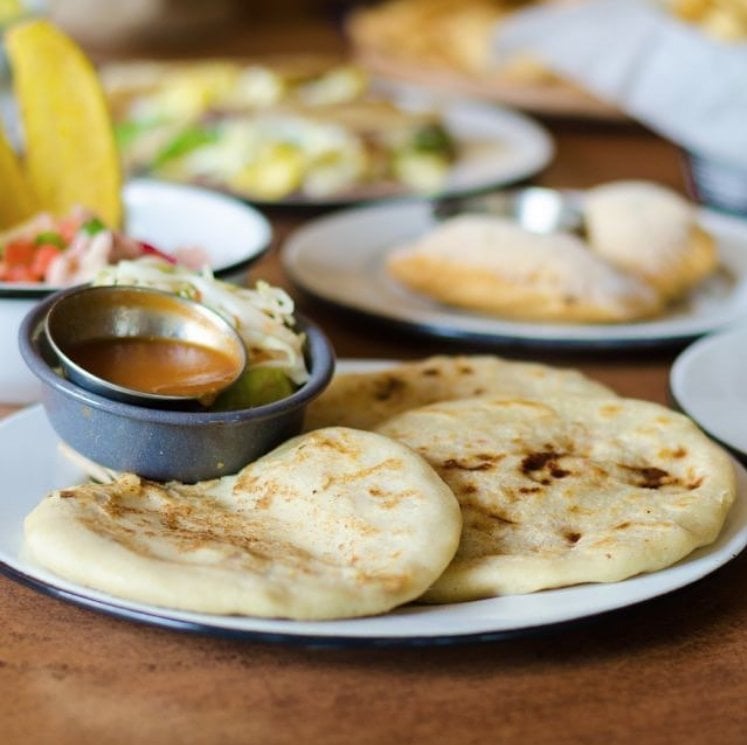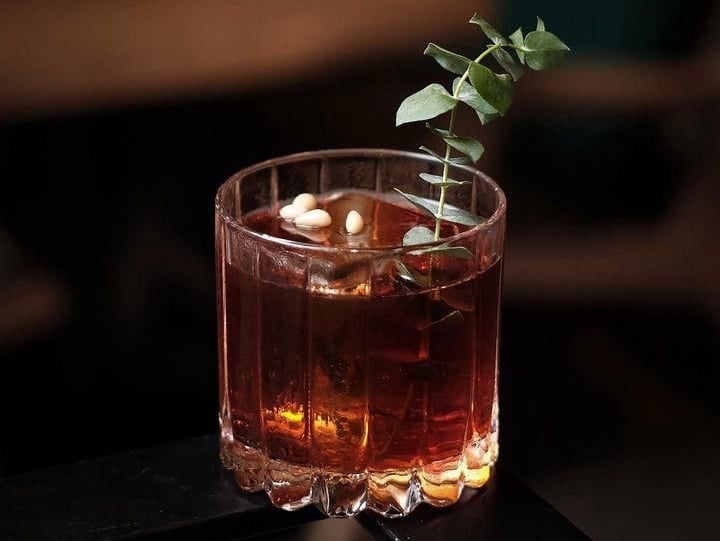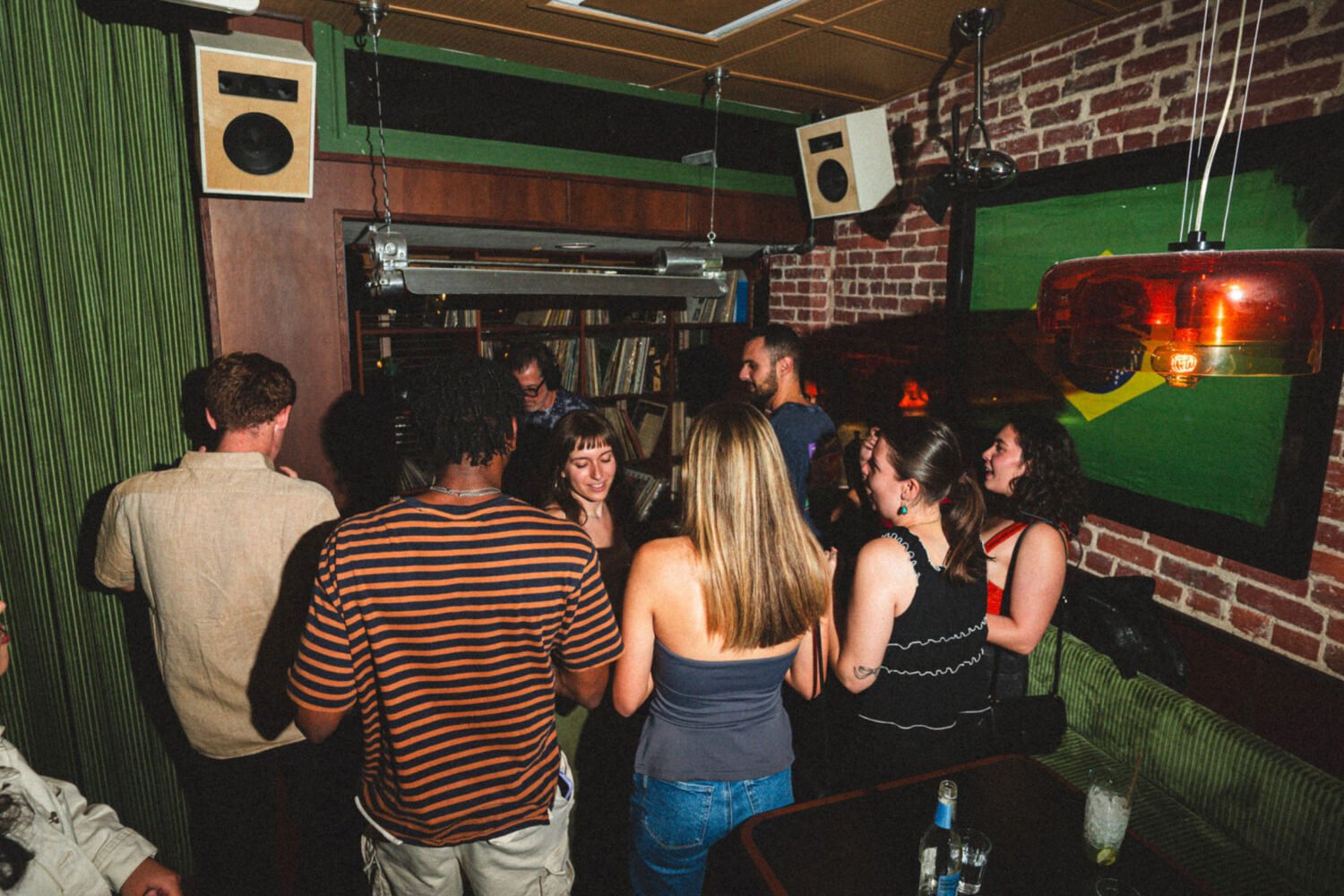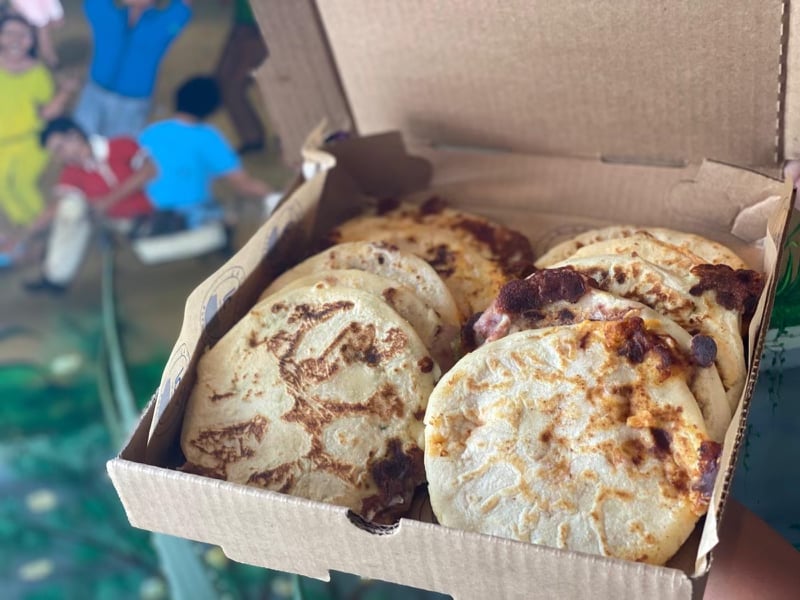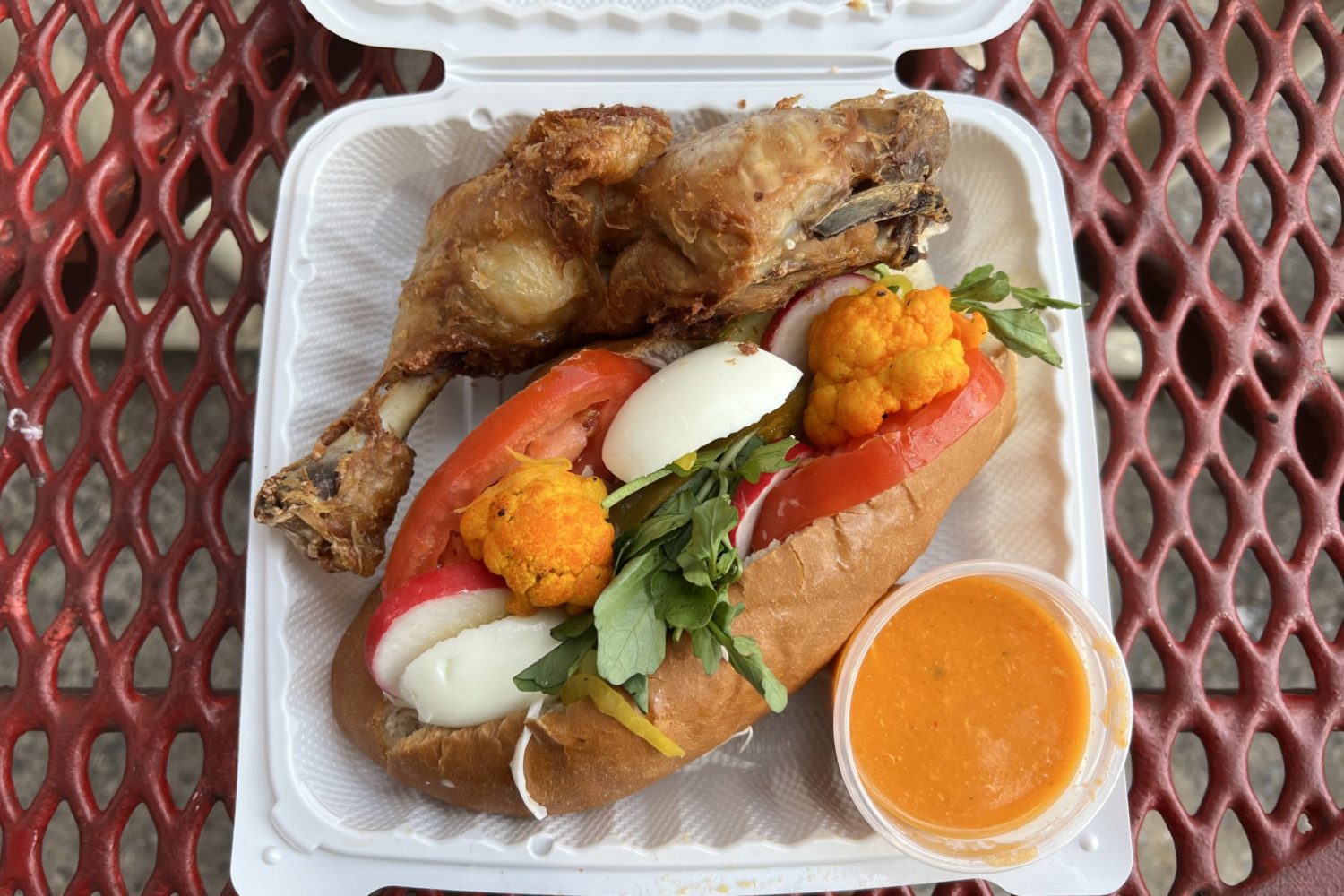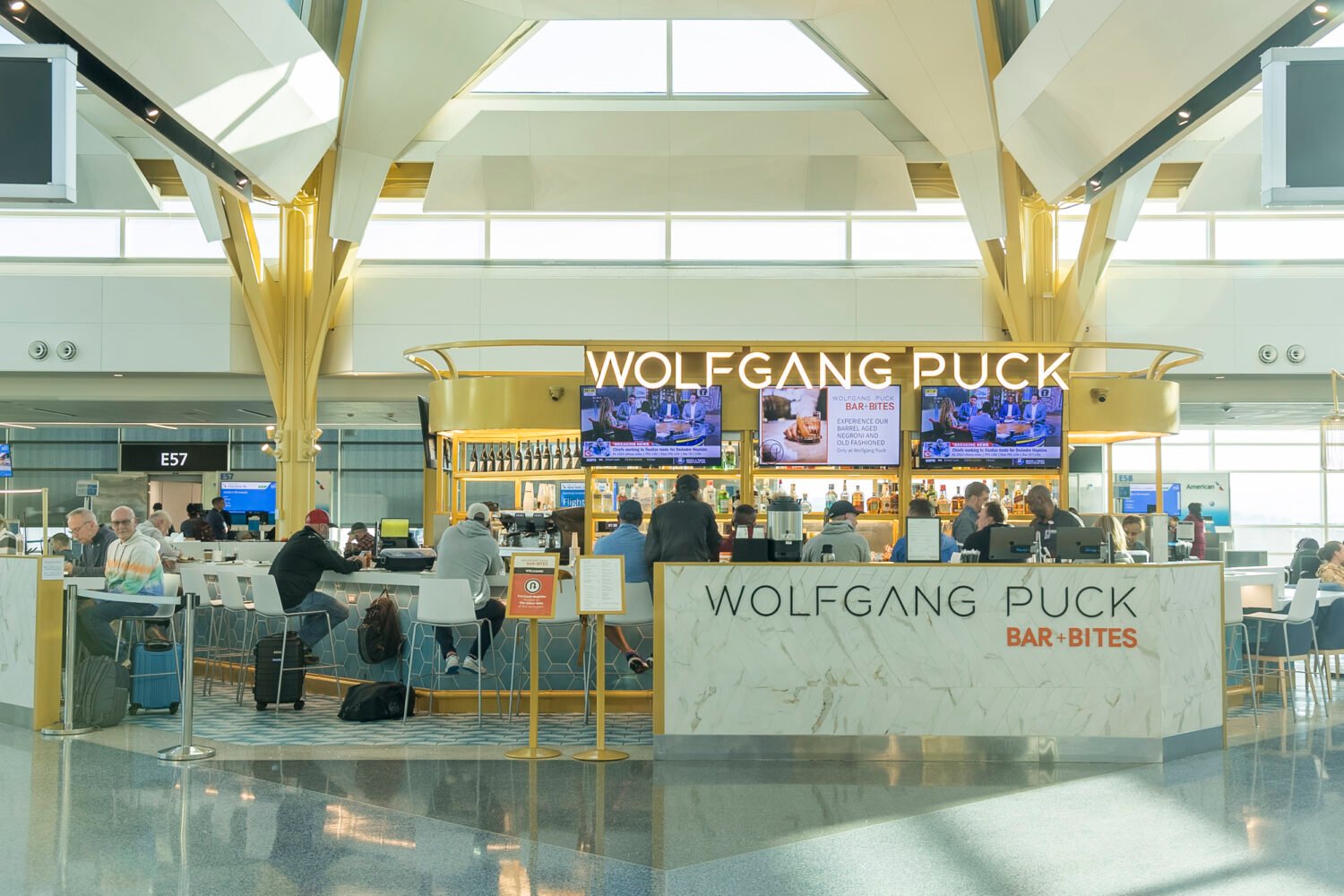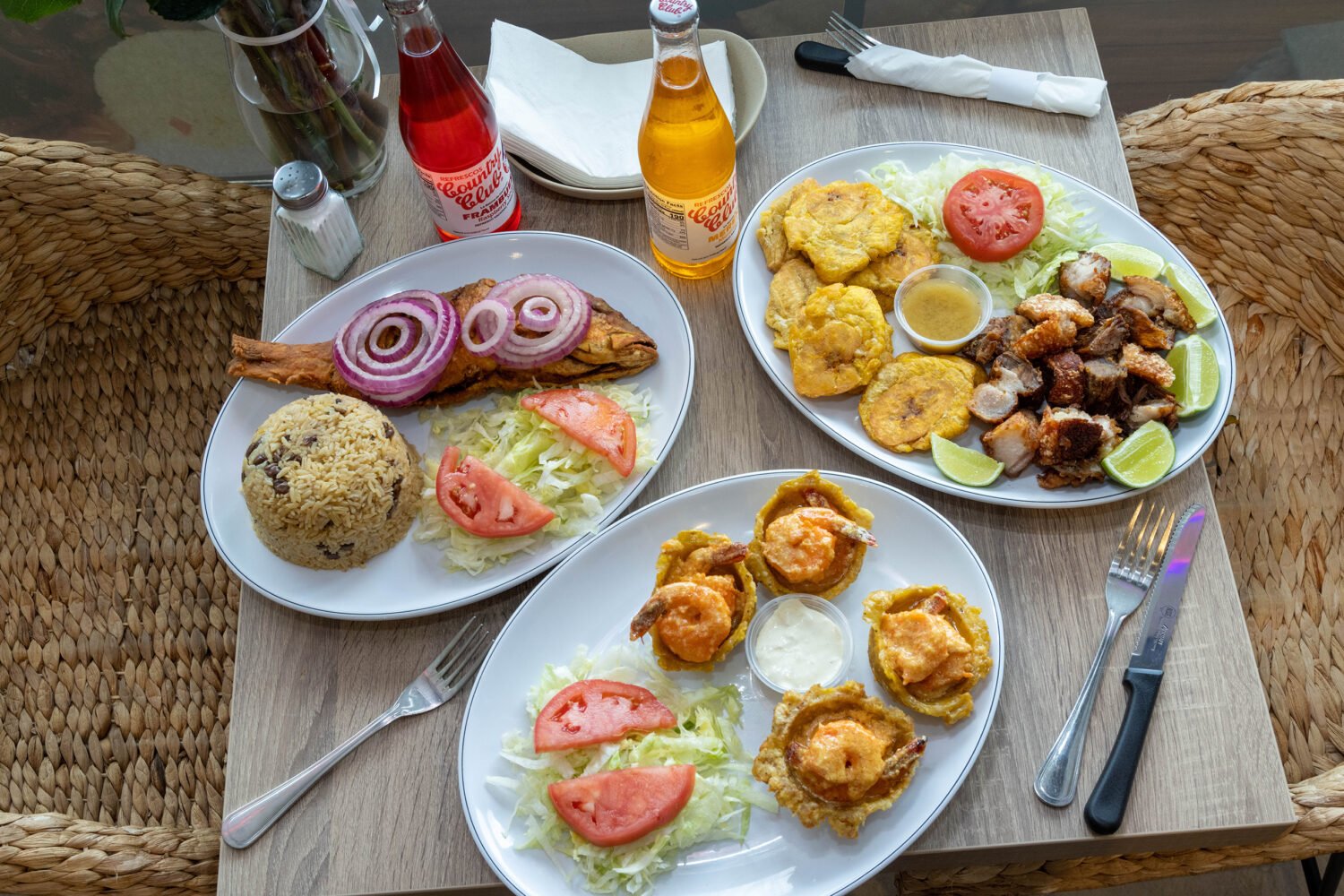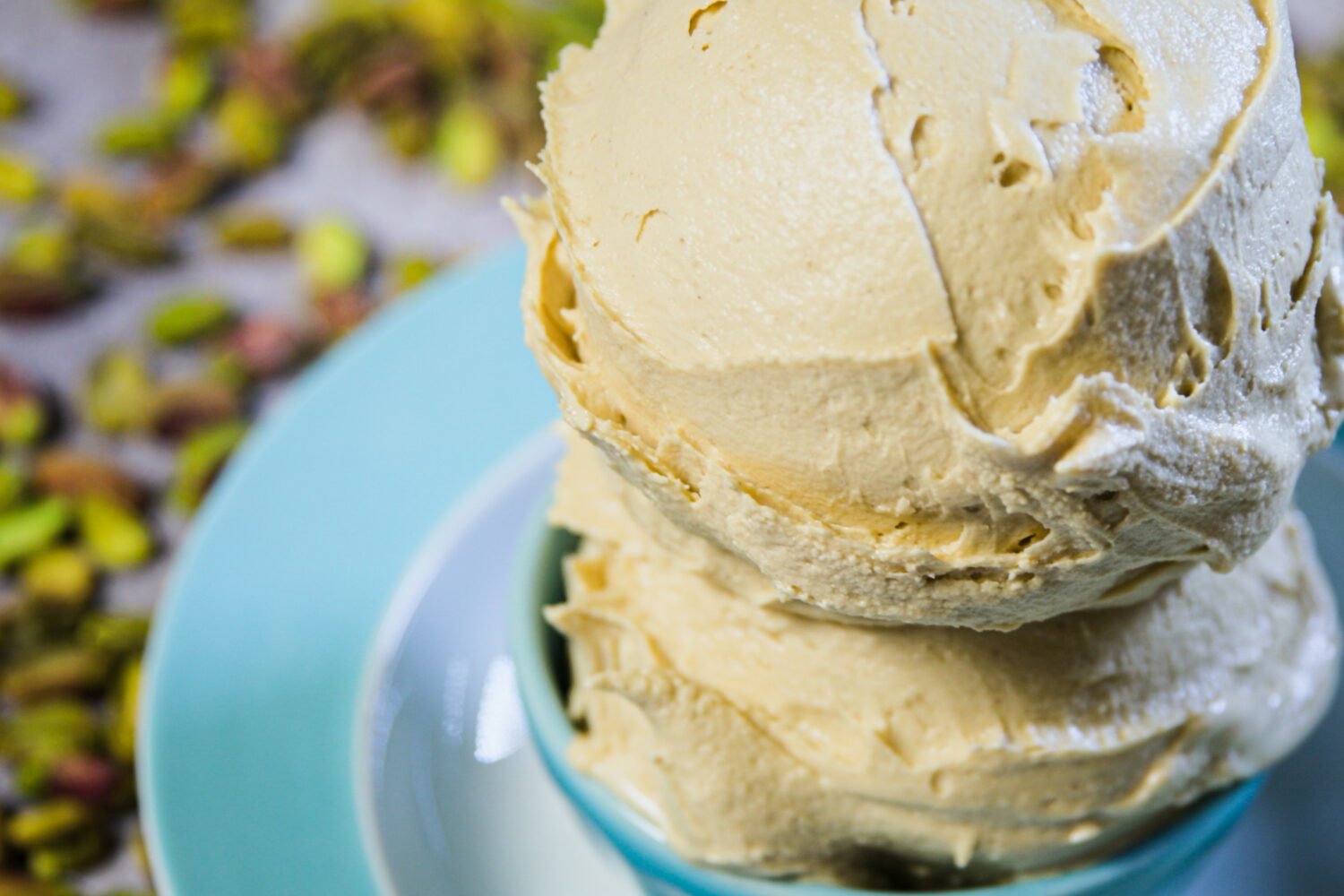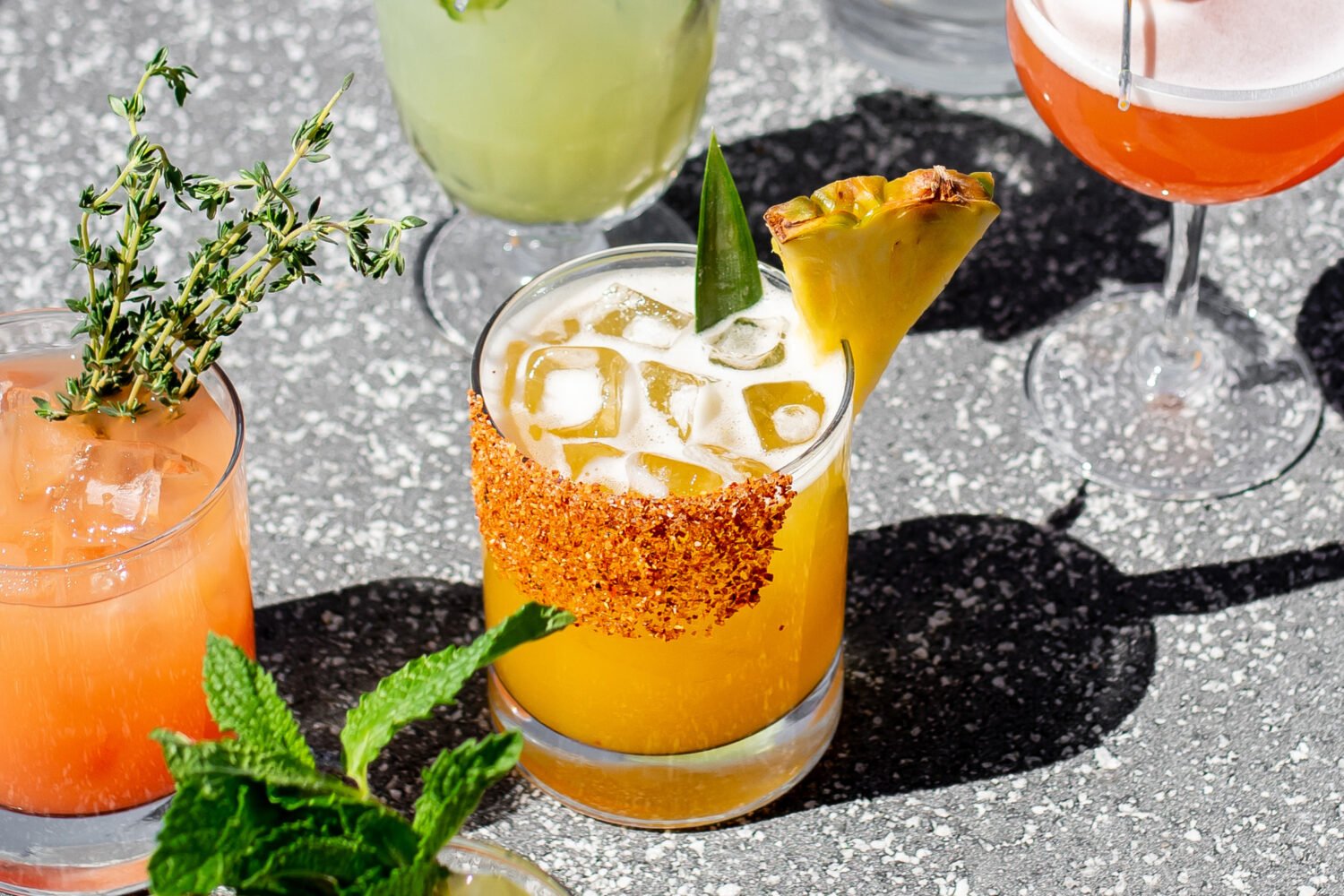It’s often argued that DC doesn’t have an emblematic dish beyond half-smokes and newly controversial mumbo sauce. But pupusas might be on track to join their ranks. In just about four decades, the thick, griddled corn cakes went from a niche Salvadoran snack served in mom-and-pop shops to a citywide hit. You can seek them out anywhere from the annual pupusa festival to a stall at Nationals Park, and locavore Glen’s Garden Market. But pupusas, along with other Salvadoran dishes commonly found in DC, didn’t just gain popularity on their own merit. Those dishes might not be so popular without the success of another Latin cuisine: Mexican food.
José Centeno-Meléndez spent six years growing up in El Salvador before moving to Prince George’s County. He remembers eating at a Salvadoran restaurant in the DC area for the first time as a child—and being confused. Though he chose to eat pupusas, many fellow diners, including his Salvadoran parents, opted for Mexican dishes he wasn’t familiar with.
“I was not expecting to see fajitas and margaritas in the Salvadoran-owned restaurant. That definitely wasn’t part of my experience having lived in El Salvador,” he says. “But that experience has come to define what it means to be a Salvadoran-American in DC.”
Centeno-Meléndez, now a PhD student at the University of Texas, has turned that revelation into a sociological and culinary study. His research looks at the history of Salvadoran restaurants in the DC area, and the intricate role Mexican cuisine played in their rise.
“Nowadays, you see restaurants appear, mainly in Maryland, where the owners offer exclusively Salvadoran food, but that’s something that’s happened over time,” says Centeno-Meléndez. “When Salvadoran-owned restaurants first started appearing, they were marketed as Salvadoran-Mexican.”

That branding is still around at places like El Rinconcito Café, Gloria’s Pupuseria, and Pupuseria El Buen Gusto—all of which are considered some of the best pupusaerias around town, but also serve Mexican staples like fajitas and guacamole. At El Tamarindo, the longest-running Salvadoran-owned restaurant in DC, Sal-Mex fusion has been a way of business for 36 years.
El Tamarindo’s founder, Jose Reyes, came to DC in 1978 from La Unión, in the eastern part of El Salvador. When he got here, he found a job at a Mexican restaurant by the waterfront, where he started as a dishwasher and worked his way up to a busser, and eventually, a line cook. When he opened his own eatery a few years later, he fashioned a menu that paid homage to the dishes from back home and the dishes he learned to prepare at the Mexican joint.
“Salvadoran cuisine was not very known at the time,” says Ana Reyes, Jose’s daughter and El Tamarindo’s current manager. “So I believe we piggy-backed off the Mexican cuisine to kind of introduce the Salvadoran dishes.”
That piggy-backing is still in evidence today. El Tamarindo currently offers a wide selection of pupusas, Salvadoran soups, and antojitos salvadoreños (Salvadoran snacks). But there are also burritos, chimichangas, margaritas, and weekly Taco Tuesdays.
According to Centeno-Meléndez, El Tamarindo’s story isn’t uncommon. Starting in the 1980s, early waves of Salvadoran immigrants began arriving in the DC area, fueled in part by the civil war that was raging in El Salvador. Tex-Mex cuisine was becoming trendy along the same time, with hugely popular places like Austin Grill and Cactus Cantina. That meant that, like Reyes, many Salvadorans’ first jobs were in Mexican restaurants. When it came time for Salvadorans to open their own enterprises, it was a logical next step to serve the cuisine that brought crowds (and even President H.W. Bush and his family) through the doors.
Shared racial identity also made it easy for Salvadorans to co-opt Mexican food.
“There’s this idea that if you’re brown-skinned, or a mixed-race person from the Mesoamerica region, there are a lot of slippages that people can go through,” says Centeno-Meléndez. “At that point in time, the rise of Tex-Mex cuisine was promoting this particular image of brown people that a lot of Salvadoreños coming to the DC area were able to slip into. It was a great marketing tactic for them, because a lot of these restaurants can promote themselves as authentically Salvadoran and authentically Mexican.”
Centeno-Meléndez isn’t sure why restaurants still opt for the Salvadoran-Mexican marketing now, given Salvadorans make up the largest Hispanic community in the District of Columbia (by a considerable stretch). They’re also the biggest immigrant group in DC. Perhaps it’s tradition—though these days, younger generations of Salvadoran restaurant owners are shifting away from Mexican food and embracing their own culinary identity.
Take La Casita, a top-rated pupuseria in Silver Spring that first opened in 2003. General manager Jaime Arbaiza took over the eatery from his parents, who first moved to DC from El Salvador in the 70s. He explains that customers at La Casita are able to find the kinds of dishes that Salvadoran families like to make at home, such as sopa de frijoles (bean soup). Ask him about the tacos on the menu, and he says they’re not really Mexican tacos.
“We wanted to do our own version of the taco,” he says. They feature chismol, a tomato-onion-pepper mix popular in Central America, instead of pico de gallo. The tortillas are thicker than normal.
Arbaiza says he understands why many Salvadoran restaurants adopt Mexican food: “You pick something that broadens the base.” But that’s not the direction he wants to go in.
“I love Mexican food, but I just wanted straight Salvadoran [for La Casita],” he says. “Don’t get me wrong, I got a lot of blowback from my family. Like, ‘If we want to make some money, we gotta sell nachos and burritos and quesadillas.’ I’m like, no, absolutely not. I don’t want any of that because people know good food, they have a good bullshit meter. They realize when someone is trying to do it authentically and when someone is just trying to sell you something.”
Salvadoran-born Geovany Silva is a less-established restaurateur in the city. He’s 30, and recently teamed up with his mother-in-law to create the Savor Salvadoreño food truck, which has been operating for a few months. They only sell Salvadoran fare—think pupusas, pastelitos de papa, or empanadas de platano.
“We wanted to focus on our traditional food and dishes,” he says. “Just authentic Salvadoran. The reason we started the food truck is because we know there is demand for food like this.”
That’s not to say the melding of cultures and cuisines is lessening, especially as the Latino community in the DC area becomes more diverse. In 2016, La Casita opened a new location in Gaithersburg. To reflect the diverse Hispanic community in the area, they chose to name the restaurant La Casita Cocina C.A., with “C.A.” as an acronym for Centroamericana. The menu includes “core La Casita staples” like pupusas, yucca, carne asada, and pescado frito. But there’s also food from Honduras, Guatemala, and Nicaragua.
The mixing of the menu mirrors the Arbaiza family. Jaime has four brothers and sisters, all of whom have spouses from different Central American countries.
“We have all spent time in all these countries, and it just opens up the doors to all these other cuisines and all these other things you can do,” says Arbaiza.

